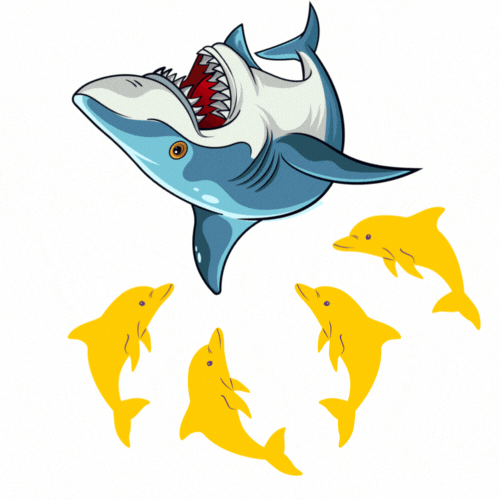
Build your team like a pod of Dolphins and work together with your close connections with whom you have value alignment. Add join us to build the tools that empower our collective imaginations.
Yes, a pod of dolphins can effectively defend themselves and other animals from a shark. While a large shark can be a threat to a single, young, or sick dolphin, a pod’s superior intelligence, teamwork, and physical tactics give them a significant advantage.
Key defensive strategies used by dolphin pods:
- Collective protection. A pod provides safety in numbers, particularly for vulnerable members like calves. Dolphins will form a protective circle around those in danger, using their bodies to create a barrier that the shark cannot easily penetrate.
- Targeted ramming. Dolphins use their strong, bony snouts as battering rams, striking the shark’s soft underbelly or sensitive gills. This can cause serious internal injuries or suffocate the shark by damaging its gills.
- Strategic coordination. As social and highly intelligent creatures, dolphins can work together to outsmart a shark. They may use tactics to distract and corner the shark, striking from multiple angles to leave the shark disoriented and with no escape.
- Superior agility. Dolphins are often more agile and have greater endurance than sharks. Their powerful, horizontal tail flukes allow for quick directional changes, which can help them outmaneuver a shark, which has less mobility from its vertical tail.
- Echolocation. A dolphin’s echolocation system gives it an advantage by allowing it to detect and track a shark’s movements, even in murky water. This provides an early warning system that helps the pod prepare and strategize its defense.
- Sheer harassment. By acting aggressively in large numbers, a dolphin pod can simply bully a shark until it decides to retreat. The risk of injury from a pod attack is often too high for a solitary shark, which typically seeks out easier prey.
This collective behavior has even been documented to protect other species, including humans, in a number of real-life incidents.
